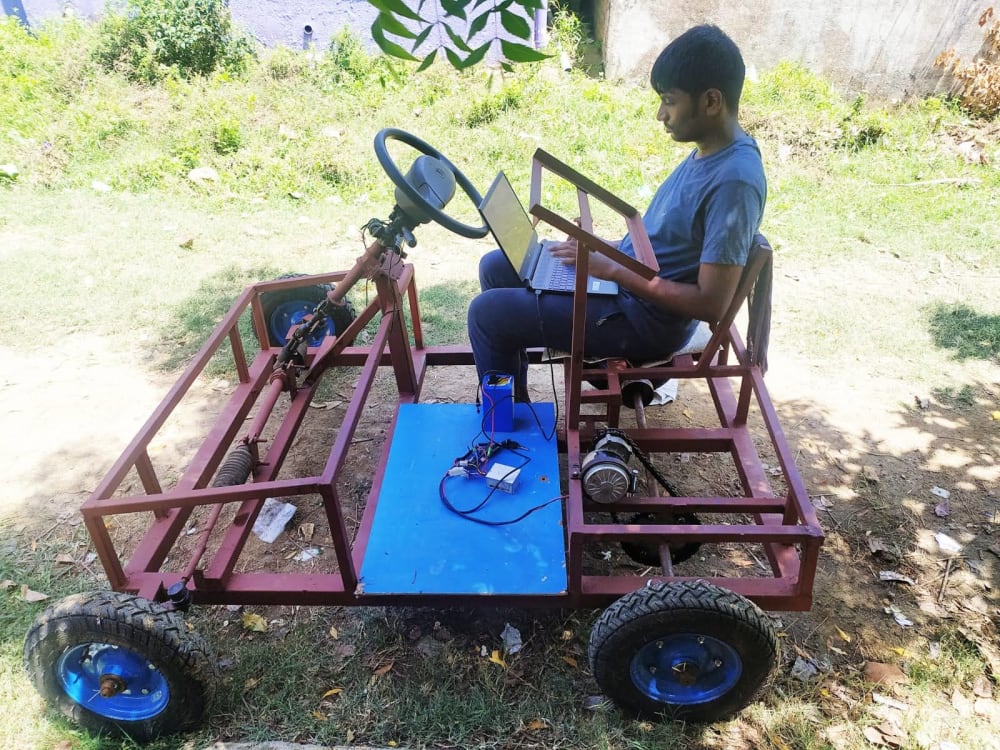Proposal: Durable, Low-Cost Electric Vehicle with Solar Panel and Battery Cooling System
The proposed solution aims to develop a highly durable and cost-effective electric vehicle (EV) capable of long-distance travel at a nominal speed. This EV would accommodate up to four passengers and an additional load of 100 kg. It incorporates a solar panel and a dynamo to enable passive charging of the battery and other appliances, reducing battery drain. Furthermore, the vehicle includes a low-power-consuming battery coolant system that maintains optimal battery temperature even when the vehicle is parked or halted.
Environmental Problems:
The overuse of fossil fuels is a significant environmental challenge in the 21st century. The automotive industry, a major consumer of fossil fuels, contributes to pollution and poses a threat to global well-being. Electric vehicles offer a solution by reducing reliance on fossil fuels, but challenges remain.
Economic Problems:
While electric cars have been proposed as a solution, their economic viability in countries with varying economic barriers is a concern. Foreign firms may not consider economic variations and local requirements, prioritizing their own profits and growth over regional needs.
Implementation Problems:
Extreme climates, particularly in hot countries, pose implementation challenges for electric vehicles. Lithium-ion batteries, commonly used in EVs, can be highly flammable and dangerous in both hot and cold conditions. These temperature constraints limit the widespread adoption of electric vehicles.
To address these problems, the proposed methodology focuses on redesigning the electric car model:
Solving the Environmental Issues:
The solution integrates a solar charging unit and a dynamo directly into the EV's body, eliminating the need for electricity generated from fossil fuels. An efficient battery charging system maintains a steady battery level, allowing for reliance on renewable resources without harming the environment.
Solving the Economical Issues:
To reduce costs without compromising passenger safety, the design incorporates a 24V actuator system instead of using induction motors. This system provides sufficient power, speed, and torque, with the ability to carry additional loads up to 500 kg. A 36V BLDC motor can also be implemented, meeting user speed expectations with a payload capacity of 500-800 kg.
Solving the Post-Implementation Problems:
A unique battery cooling system, based on the Peltier effect, ensures 24/7 protection by maintaining an optimal temperature range of 20-30°C. This system uses low electricity periodically and utilizes water as a coolant circulating around the battery cover, preventing dangerous battery overheating.
Future research directions include enhancing safety features, improving the Battery Management System, and developing an autonomous driving system. Further exploration focuses on making the battery management system self-sufficient or minimizing its reliance on external power sources. Additionally, improving the efficiency of the motor control system and dashboard control system are important aspects of ongoing research.
This research offers a comprehensive methodology to address the identified problems, including environmental concerns through the use of electric vehicles, while also tackling implementation and economic barriers. By adopting this research, we can pave the way for the widespread adoption of electric vehicles and contribute to a sustainable transportation future.
Video
Like this entry?
-
About the Entrant
- Name:Krithik Vijayakumar
- Type of entry:individual
- Software used for this entry:Python
- Patent status:pending






